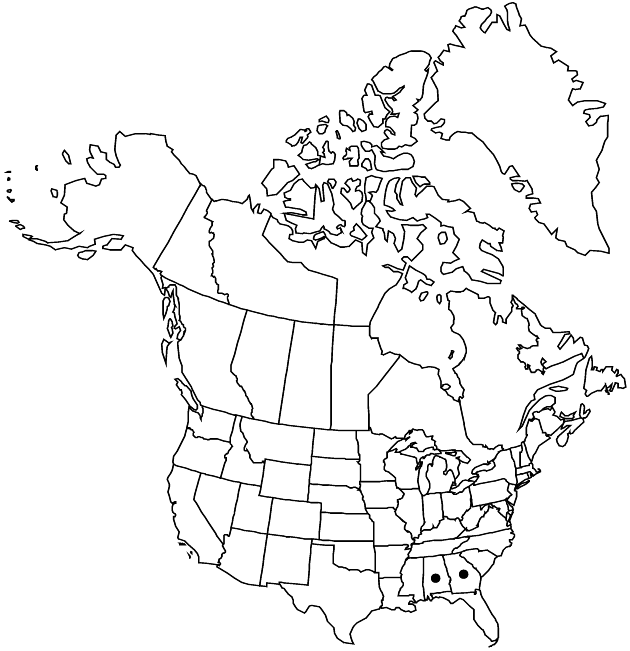Eurybia jonesiae
Phytologia 77: 260. 1995.
Plants 20–110 cm, eglandular; rhizomes thick, caudices short, stout. Stems 1, erect, simple, straight to slightly flexuous, glabrous or sparsely villosulous proximally, increasingly villosulous distally. Leaves basal and cauline, margins serrate, scabrous, apices usually acute, sometimes acuminate, mucronate, faces scabrous, abaxial sparsely villous to strigose with hirsute veins, adaxial strigose; basal and proximal long-petiolate (to 120 mm), petioles not winged (or rarely so), hirsute and ciliate, blades widely ovate to ovate or lanceolate, 80–190 × 50–110 mm, bases usually cordate, subcordate, or rounded, sometimes cuneate; cauline short-petiolate (to 50 mm) to subpetiolate or sessile (arrays), petioles gradually winged distally, blades ovate to lanceovate, 20–60 × 8–30 mm, reduced distally, bases rounded to cuneate. Heads 4–80 in flat-topped, corymbiform arrays. Peduncles 0.4–1.6 cm, villous; bracts single or a second midway. Involucres cylindro-campanulate, 10–13 mm, equaling or longer than pappi. Phyllaries 36–50 in 4–5 series, ovate, elliptic, or lanceolate to linear (outer 3 × 1.5 mm, inner 13 × 0.7 mm), strongly unequal, bases indurate, green zones ± lanceolate to linear along midnerves (inner), 1/4–3/4 width, subapical (rarely outer foliaceous), margins hyaline, erose, ciliate, apices squarrose, acute to long-acuminate (inner hyaline), abaxial faces ± villosulous, adaxial glabrous. Ray-florets 7–15; corollas whitish to cream-colored, becoming purple, 15–20 × 1–2 mm. Disc-florets 20–25; corollas yellow, slightly ampliate, 6.5–8.5 mm, tubes longer than funnelform throats, lobes ± reflexed, lanceolate, 1–1.2 mm. Cypselae brown, fusiform, ± compressed, 3–4 mm, ribs 7–9, tan, prominent, crowded, faces strigillose; pappi of cinnamon (sometimes ± clavate) bristles, ± equaling disc corollas. 2n = 54.
Phenology: Flowering late summer–fall.
Habitat: Rich woods, moist ravines, rocky ridges, wooded slopes near streams, Piedmont in oak-hickory-pine forest region
Elevation: 100–400 m
Discussion
A number of specimens from Alabama and Georgia identified as Aster commixtus are this species (see also W. F. Lamboy 1988).
Selected References
None.
Lower Taxa
"[" is not declared as a valid unit of measurement for this property."]" is not declared as a valid unit of measurement for this property."thick" is not a number.
